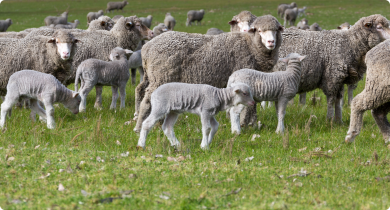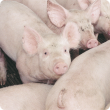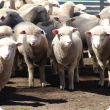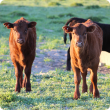Management & reproduction
Reproductive rate varies widely among livestock species. Nonetheless, efficient reproduction is critical to profitability in all livestock industries. Nutrition and genetics are the key drivers of efficient reproduction. However, there are many other facets of management such as, behaviour, use of technology and housing that must also be taken into consideration if farm enterprises are to raise their reproductive rate.
The Department of Primary Industries and Regional Development conducts research, development and extension activities in collaboration with industry partners to improve the productivity of the main livestock species. The objective is to support the economic development of the state by improving the profitability of Western Australian farm enterprises.
See Also
Filter by search
Filter by topic
- (-) Remove Livestock species filter Livestock species
- Sheep (44) Apply Sheep filter
- Pests, weeds & diseases (16) Apply Pests, weeds & diseases filter
- Livestock health & diseases (15) Apply Livestock health & diseases filter
- Diseases (15) Apply Diseases filter
- Biosecurity & quarantine (13) Apply Biosecurity & quarantine filter
- Biosecurity (13) Apply Biosecurity filter
- Livestock biosecurity (11) Apply Livestock biosecurity filter
- Beef cattle (11) Apply Beef cattle filter
- Livestock disease surveillance (10) Apply Livestock disease surveillance filter
- Feeding & nutrition (6) Apply Feeding & nutrition filter
- Pigs (5) Apply Pigs filter
- Livestock parasites (5) Apply Livestock parasites filter
- Dairy cattle (3) Apply Dairy cattle filter
- Genetics & selection (3) Apply Genetics & selection filter
- Climate, land & water (3) Apply Climate, land & water filter
- Poultry & birds (2) Apply Poultry & birds filter
- State Barrier Fence (2) Apply State Barrier Fence filter
- Invasive species (2) Apply Invasive species filter
- Land use (2) Apply Land use filter
- Pasture management (1) Apply Pasture management filter
- Pastures (1) Apply Pastures filter
- Rangelands (1) Apply Rangelands filter
- Mechanical, physical and cultural (1) Apply Mechanical, physical and cultural filter
- Water (1) Apply Water filter
- Food, export & investment (1) Apply Food, export & investment filter
- Control methods (1) Apply Control methods filter
- Crops (1) Apply Crops filter
- Goats (1) Apply Goats filter
- Land use planning (1) Apply Land use planning filter
- Meat quality (1) Apply Meat quality filter








